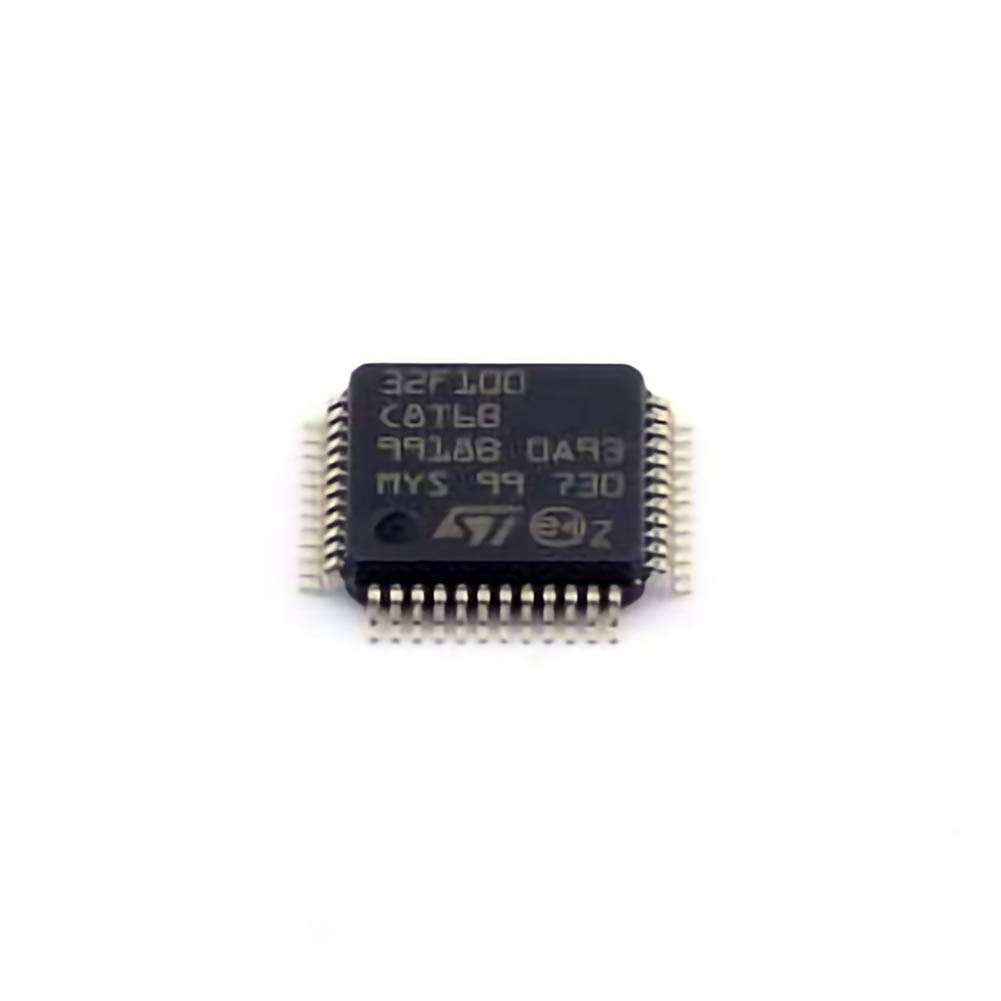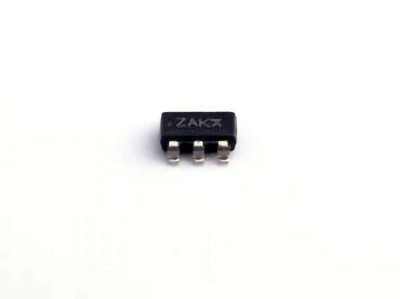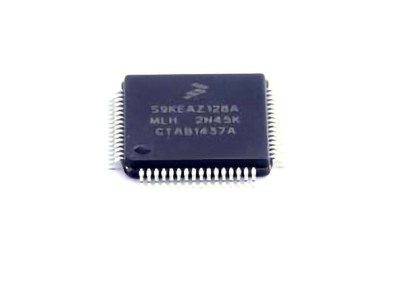
The STM32F100C8T6B is a popular microcontroller in the STM32 family, offering performance, flexibility, and cost-effectiveness for a wide range of embedded applications. However, like all electronic systems, users often encounter issues during development or deployment. This article explores the most common troubleshooting problems faced when using the STM32F100C8T6B microcontroller and provides effective solutions to resolve them, ensuring a smooth development process and reliable performance.
STM32F100C8T6B, microcontroller troubleshooting, embedded systems, STM32 debugging, common STM32 issues, microcontroller solutions, STM32 errors, embedded development, STM32 performance, STM32 problems and solutions.
Introduction to STM32F100C8T6B Microcontroller
The STM32F100C8T6B microcontroller is part of the STM32 F1 series, widely praised for its balance between performance, energy efficiency, and cost. It is based on the ARM Cortex-M3 core, offering a Clock speed of up to 24 MHz and a rich set of features such as multiple GPIO pins, timers, ADCs, UARTs , and Communication peripherals. Due to its versatility and wide range of applications—from simple embedded projects to complex industrial solutions—developers often turn to the STM32F100C8T6B for their embedded systems.
However, as with any complex microcontroller, users may encounter difficulties during the design, development, or deployment phases. These issues can range from hardware-related errors to software configuration issues. Understanding common troubleshooting techniques and solutions can help resolve these problems quickly and efficiently.
Common Troubleshooting Scenarios with STM32F100C8T6B
No Power or Device Not Booting
One of the most common issues faced by developers is when the microcontroller seems to not power up or boot correctly. This could be caused by several factors, including:
Incorrect Power Supply: The STM32F100C8T6B requires a stable 3.3V power supply. If the power supply voltage is too high or too low, the microcontroller may not boot properly. Ensure the power rails are properly designed and that there are no short circuits or incorrect voltage levels.
Incorrect Reset Circuit: If the reset pin (NRST) is not connected properly, the microcontroller may not initialize correctly. Double-check the connection of the reset pin to ensure it’s either grounded or pulled high, depending on the configuration.
Defective Components: Faulty capacitor s or Resistors in the power circuit can also cause the device to fail to boot. Inspect the power circuitry thoroughly to rule out hardware faults.
Solution: Verify the power supply using a multimeter and ensure that it matches the required 3.3V level. Check for proper reset circuit design and ensure that no shorts or faulty components are present in the power path.
Wrong Communication or Peripherals Not Working
Communication issues are common when using various peripherals such as UART, SPI, I2C, or GPIO pins. A typical scenario could involve the STM32F100C8T6B not responding to serial communication or peripherals not functioning as expected.
Improper Pin Configuration: GPIO pins are multiplexed, meaning they can serve different functions depending on the settings. For instance, if you attempt to use a pin for UART communication but it’s configured as a general-purpose input, communication will fail. Ensure the pin functions are correctly configured in the microcontroller’s firmware.
Clock Source Issues: Many peripherals require specific clock sources to function correctly. If the clock configuration in your software does not match the hardware setup, peripherals may not work. Double-check the system clock configuration, especially when using features like SPI, UART, or I2C.
Incorrect Baud Rate or Timing : For serial communication protocols like UART, incorrect baud rates, or mismatched timing between devices will prevent successful communication. Ensure both devices are configured with the same communication parameters (baud rate, parity, stop bits).
Solution: Review the STM32F100C8T6B pinout and ensure the correct configuration of pins and peripherals. Ensure the clock settings in your firmware are correct and that peripherals are initialized with the appropriate clock sources. For communication issues, verify baud rates and timings match between devices.
Software or Firmware Issues
Software bugs or incorrect firmware configurations can cause unpredictable behavior in the STM32F100C8T6B. Some common scenarios include:
Incorrect Firmware Settings: If the configuration settings in your project (e.g., peripheral initialization, interrupt priorities) do not match the actual hardware configuration, it could lead to malfunctioning of the microcontroller. For example, an improperly configured interrupt handler could cause the system to crash.
Uninitialized Variables: Uninitialized variables or buffers in your code may lead to undefined behavior. Always initialize variables before use to avoid conflicts with Memory regions.
Stack Overflow or Memory Corruption: If your application consumes too much stack space or doesn’t properly manage memory, it can cause crashes or unpredictable behavior. This is especially important when working with RTOS or handling large data structures.
Solution: Review the initialization of hardware peripherals and ensure the configuration matches the hardware setup. Use debugging tools like breakpoints and watch variables to track down issues related to memory usage and variable initialization. A static code analyzer may also help identify potential problems in your firmware.
I2C/SPI Bus Errors
Bus communication errors are frequently encountered when using I2C or SPI protocols. Problems such as bus contention, timing errors, or incorrect address configurations are common culprits.
Bus Contention: If multiple devices are trying to control the bus at the same time, it can lead to contention, causing communication failure. This can occur if the SDA/SCL (for I2C) or MOSI/MISO (for SPI) lines are not properly managed.
Incorrect Addressing or Missing Pull-up Resistors (for I2C): In I2C communication, each device is addressed via a unique address. If the address is misconfigured or there are no pull-up resistors on the SDA and SCL lines, communication errors can occur.
Mismatched Clock Frequencies: The I2C or SPI clock speed needs to be set properly to match the peripherals on the bus. If the speed is too high for the device to handle, errors will occur.
Solution: For I2C, ensure that pull-up resistors are used on both the SDA and SCL lines. For both I2C and SPI, verify that the bus configuration (speed, addressing, and data formats) is set correctly. Check for any possible contention on the bus and make sure the clock frequencies match between the microcontroller and peripherals.
Interrupt Conflicts and Priority Management
STM32F100C8T6B supports a large number of interrupts, and incorrect management of interrupt priorities can lead to unexpected behavior, such as the microcontroller not responding to certain interrupts.
Interrupt Priority Misconfiguration: If the priorities are not set correctly, higher-priority interrupts might not be serviced as expected, or lower-priority interrupts might block critical functions.
Interrupt Nesting Issues: If interrupts are not properly nested or masked, it can cause conflicts between different interrupt sources, leading to improper behavior.
Solution: Review interrupt priority settings and make sure they align with the intended design. If using FreeRTOS or another RTOS, ensure that the interrupt nesting and critical section handling are correctly implemented. Using the STM32CubeMX tool can help visualize and configure interrupt priorities more efficiently.
6. Watchdog Timer Problems
The watchdog timer is used to reset the microcontroller in case the software crashes or becomes unresponsive. However, incorrect configuration or improper handling can cause unwanted resets or failure to reset when needed.
Watchdog Timer Not Configured Correctly: If the watchdog timer is not enabled, or if it’s not refreshed within the timeout period, it will cause the microcontroller to reset. Developers often forget to refresh the watchdog during long tasks.
Early Timeout: If the timeout is set too low, the watchdog may trigger unnecessarily, causing resets during normal operations.
Solution: Review your watchdog timer configuration, ensure it’s enabled, and refresh it appropriately in your code. Use a sufficiently long timeout period to avoid false resets during normal processing.
Clock Configuration Issues
The STM32F100C8T6B uses a sophisticated clock system, which allows flexible configuration of various clock sources, including external crystals, PLLs , and internal oscillators. Misconfigurations can lead to performance issues or failure to boot.
Incorrect PLL Settings: If the PLL (Phase-Locked Loop) is not configured properly, the microcontroller may fail to start or run at an incorrect speed. This can lead to system instability, especially if peripherals are clocked incorrectly.
Clock Source Misconfiguration: Switching between internal and external clock sources, or failure to configure the correct source, can cause the microcontroller to behave unpredictably or fail to start.
Solution: Use STM32CubeMX or a similar tool to configure the clock system correctly. Double-check the crystal oscillator configuration and ensure the PLL settings are correct. Test the clock system with different configurations to ensure stable performance.
Overheating or Excessive Power Consumption
Overheating can result from several sources, including an improperly regulated power supply, high current draw, or insufficient cooling. Excessive power consumption can affect the performance of embedded systems.
Power Supply Noise: If the power supply is not well-regulated or introduces noise, it could cause the microcontroller to behave erratically.
High Power Demand: Some peripherals, such as certain communication interface s or ADCs, can consume significant power, leading to excessive heat generation.
Solution: Ensure the power supply is stable and properly filtered to minimize noise. If necessary, implement a heat management solution such as adding a heatsink or reducing the load on power-hungry peripherals.
Debugging Tips
When facing issues with the STM32F100C8T6B, it’s essential to use proper debugging techniques:
Use STM32CubeMX for Configuration: STM32CubeMX helps to configure hardware peripherals and generate initialization code, ensuring that you don’t miss any necessary setup steps.
Leverage SWD/JTAG for Debugging: Use the Serial Wire Debug (SWD) interface or JTAG to monitor the microcontroller’s internal state during operation, step through your code, and identify the cause of the issue.
Use Unit Testing and Code Reviews: Implement unit testing in your software development process and perform code reviews to catch common bugs before they become significant issues.
Conclusion
Troubleshooting the STM32F100C8T6B can be challenging, but understanding the common issues and applying the right solutions can make the process smoother. Whether it’s power issues, communication failures, software bugs, or peripheral configuration errors, knowing where to look and how to test effectively can save valuable development time and ensure that the system performs as expected. By following best practices and using tools like STM32CubeMX, SWD debugging, and careful power management, developers can overcome obstacles and ensure their embedded systems are reliable and efficient.
If you are looking for more information on commonly used Electronic Components Models or about Electronic Components Product Catalog datasheets, compile all purchasing and CAD information into one place.


